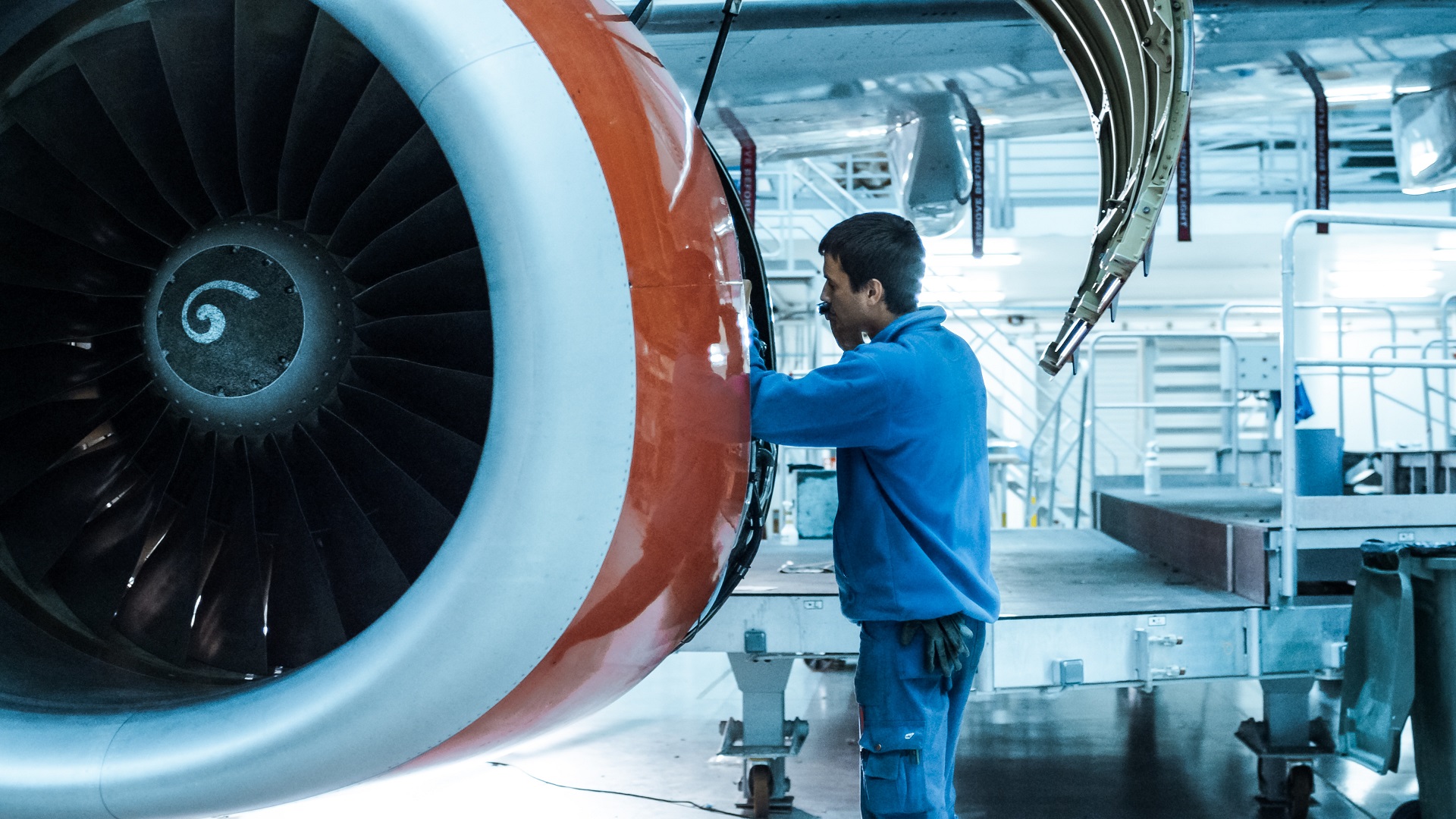Safety culture of an aircraft maintenance organization.
Safety culture is specifically related to the development and growth phase of the organization and explicitly relates safety culture to production interests. The analysis focuses on the various roles and the tensions between the quality assurance and maintenance management departments, and the way aircraft maintenance technicians (AMTs) in practice deal with tensions between safety and production interests. Theoretically this article stresses the value of a process view on organizational development for the analysis of safety culture and the relationship between safety and economic interests.
Aviation is closely associated with safety culture, not so much because of a high rate of incidents but rather because of the severe consequences in case something goes wrong. Travel at high speeds and high altitudes in complex traffic systems means that even small human and technical errors can quickly lead to disasters.
Air traffic involves a typical case of low probability/high consequence risks, and aircraft manufacturers and airline companies do what they can to prevent accidents and safety incidents from occurring.
As a rule, such organizations claim to put ‘safety first’. Safety should also be regarded as crucial for the reputation of such organizations. Companies involved in the manufacturing, operation and maintenance of aircraft therefore heavily invest in safety measures and carefully guard their safety image, implementing systems such as fire extinguisher inspection systems and life safety inspection systems to aid compliance. However, ‘safety’ is not an objectively given condition, but rather a socially constructed and relative organizational property dependent upon organizational values, meanings and safety practices (Gherardi et al., 1998, p. 143;Richter and Koch, 2004).
Organizations may indeed put ‘safety first’, but what this means in practice may depend on the technology at hand, the kind of organization and the changing market conditions under which these organizations operate. Because of the comparatively high levels of risk awareness and preventive measures airlines and other organizations in the field of aviation can be regarded as so called ‘high-reliability organizations (HRO) (Weick and Sutcliffe, 2001). As we can learn from TV series such as ‘Seconds from disaster’ and ‘Air crash investigation’, it is by now part of popular understanding that accidents in today’s HROs are not caused by a single mechanical or human failure. Extensive researches into disasters such as the nuclear melt down at Chernobyl (Reason, 1998), the Boeing 747 collision at Tenerife (Weick, 1990) or the explosion of space shuttle Challenger (Vaughan, 1998), typically focus on the chains of events which caused these disasters. When such disasters are studied more closely, organizational problems are often revealed as being part of the causal chain of events. Indeed, in safety studies there has been a shift away from individual factors that might be responsible for accidents towards organizational factors (Kingma, 2008; Chang and Wang, 2010).
Safety culture should be regarded as the organizational dimension par excellence for addressing safety in HRO’s because this concept explicitly refers to the way safety issues are handled in organizations (Pidgeon and O’Leary, 1994; Richter and Koch, 2004). Aircraft maintenance is generally regarded as crucial for aircraft safety (McDonald et al., 2000). At the same time aircraft maintenance is a remarkably under researched link in the overall system for ensuring safety in aviation. Of course, the maintenance records are immediately checked in case of aircraft accidents, but apart from these after the fact investigations and regulatory monitoring, maintenance organizations are usually hidden from public view and only indirectly known to social scientists.
IMEC Technologies provides Safety Management Software to increase worker safety and aid compliance. IMEC’s Safety Management Software will manage inspections and audits, provides hazard identification, incident reporting, management of corrective and preventative actions from generation to closure. IMEC provides lock out tag out software solutions that will allow users to create lockout tagout procedures using an intuitive Mobile App and Manage Lockout Tagout Procedures, also the Review and Execution of those Lockout Tagout Procedures using the Mobile App. Annual Lockout Tagout Procedures audits are conducted using a Mobile App. The Mobile Inspection App allow users to perform inspections and audits, for example the system can be used as a Fire Extinguisher Barcode Inspection Software system to manage monthly fire extinguisher inspections and general fire safety inspections and also to record safety observations and manage corrective actions, anywhere and anytime. The solution can be used as a fire extinguisher barcode inspection software system or life safety inspection system to aid compliance in Higher Education, Healthcare, Industrial and Commercial Organizations. Benefits from a Fire Extinguisher Barcode System include the elimination of paperwork and reducing the burden of compliance with regulations such as NFPA, The Joint Commission. The Incident Reporting App allows users to easily and quickly report incidents, hazards and near-misses, these are then sent to the appropriate people for action and are managed to closure. Web Apps provide features such as, setup, management, scheduling tools, analysis, reporting and dashboards etc with the ability to report incidents to government bodies such as OSHA and RIDDOR. HazMat T&T is a hazardous waste management software solution designed for Environmental Service Companies and companies who generate a large quantity of hazardous waste. The solution tracks hazardous waste from cradle to grave aiding compliance, providing accurate waste inventory, increasing waste handling efficiency, reducing risk and also helps manage waste costs. HazMat T&T Hazardous Waste Management Software can be deployed in a number of deployment scenarios, from Large Hazardous Waste Generators, tracking their hazardous waste at their site to Environmental Service and Waste Management Companies using it track and manage hazardous waste at transfer and disposal sites. For more information visit our website www.imectechnologies.com

